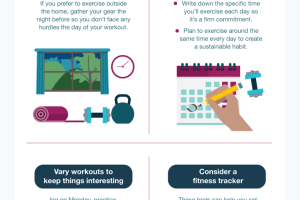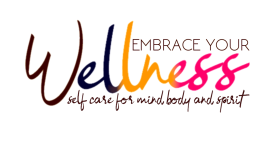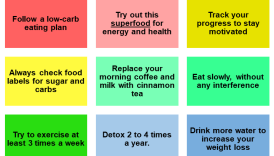How to Stay Active and Fit While Working from Home

Overview
In today’s fast-paced digital world, many people find themselves transitioning to remote work. While this arrangement offers flexibility and convenience, it can also lead to sedentary behavior. Staying active is essential for maintaining physical and mental well-being while working from home.
- How to Stay Active and Fit While Working from Home
- Overview
- Benefits of Staying Active While Working from Home
- Setting Up Your Workspace
- Ergonomic Essentials
- Designing a Functional Work Area
- Creating a Daily Routine
- Incorporating Breaks
- Scheduling Regular Exercise
- Exercise Tips
- Bodyweight Workouts
- Stretching and Yoga
- Healthy Eating Habits
- Balanced Meals
- Snack Options
- Mental Health Awareness
- Stress Management Techniques
- Mindfulness Practices
- Staying Hydrated
- Importance of Hydration
- Tips for Drinking Enough Water
- Establishing Boundaries
- Setting Work Hours
- Planning Leisure Time
- Social Connections
- Virtual Workouts with Others
- Online Fitness Communities
- Monitoring Your Progress
- Goal Setting
- Tracking Daily Activity
- Getting Sufficient Sleep
- Importance of Rest
- Tips for Improving Sleep Quality
- Motivating Yourself
- Rewards System
- Finding Inspiration
- Balancing Work and Personal Life
- Time Management Strategies
- Separating Work from Home Life
- Seeking Professional Help if Needed
- Virtual Counseling Services
- Employee Assistance Programs
- Conclusion
- Recap of Key Points
- Encouragement for Continued Active Lifestyle
Benefits of Staying Active While Working from Home
Embracing an active lifestyle during remote work can help boost productivity and improve overall health. Here are some key benefits:
- Enhanced Focus: Short physical activities can recharge the brain, enhancing concentration.
- Reduced Stress: Regular movement serves as a natural stress reliever.
- Better Posture: Incorporating movement can combat the negative effects of sitting for extended periods.
- Increased Energy: Engaging in physical activity can elevate energy levels, making work sessions more efficient.
By prioritizing activity, individuals can create a healthier work-from-home experience.
Setting Up Your Workspace
Ergonomic Essentials
Creating a workspace that promotes comfort and efficiency is crucial for staying active while working from home. The foundation starts with ergonomic essentials, which can significantly reduce strain on your body. For instance, investing in an adjustable chair and a desk that suits your height can make a world of difference. Key considerations include:
- Chair Support: Look for chairs that offer lumbar support to maintain proper posture.
- Desk Height: Your elbows should form a 90-degree angle when typing.
- Monitor Position: The top of your screen should be at eye level to prevent neck strain.
Designing a Functional Work Area
A well-organized workspace helps maintain focus and efficiency. Ensure your work area is tailored to your specific needs. Here are tips for designing a functional workspace:
- Declutter: Keep only essential items on your desk to minimize distractions.
- Good Lighting: Position your desk near natural light or use quality lamps to reduce eye strain.
- Zoning: Consider creating separate zones for work, relaxation, and exercise to maintain balance throughout your day.
By focusing on ergonomics and functionality, you set the stage for a productive and healthy work environment.
Creating a Daily Routine
Incorporating Breaks
Establishing a daily routine that includes regular breaks is essential for maintaining productivity and well-being while working from home. Personally, I’ve found that scheduling short breaks every hour allows me to recharge and refocus. Here are some effective strategies to incorporate breaks:
- Pomodoro Technique: Work for 25 minutes, then take a 5-minute break. After four cycles, take a longer break.
- Stretching: Use breaks for quick stretches to alleviate muscle tension and improve circulation.
- Step Away: Spend a few minutes walking around your home or outside for a mental reset.
Scheduling Regular Exercise
Alongside breaks, regular exercise should be woven into your daily routine. Making time for physical activity can transform your energy levels and overall health. Consider these tips for scheduling exercise:
- Morning Routine: Start your day with a brisk walk or a quick workout to boost your mood.
- Lunchtime Workouts: Dedicate part of your lunch break to a short exercise session. Whether it’s yoga, dancing, or simple bodyweight exercises, it can revitalizing.
- After-Work Activities: Plan enjoyable physical activities for the evening, like cycling or joining an online fitness class.
By intentionally incorporating breaks and exercise into a daily routine, you can enhance both your productivity and health while working from home.
Exercise Tips
Bodyweight Workouts
Now that you’ve established a daily routine with breaks and scheduled exercise, integrating bodyweight workouts can be a fantastic way to stay active. These workouts require no equipment and can be done anywhere—perfect for a home environment. I often utilize bodyweight exercises during my breaks, such as:
- Squats: Great for building lower body strength. Aim for 3 sets of 10-15 reps.
- Push-ups: Effective for upper body and core strength. Modify as needed by doing them on your knees.
- Planks: An excellent exercise to engage your entire core. Hold for 20-30 seconds and build up from there.
Stretching and Yoga
Incorporating stretching and yoga into your routine can be incredibly beneficial, especially when countering the effects of prolonged sitting. Not only do these practices enhance flexibility, but they also promote relaxation. Here’s how to include them:
- Morning Stretch: Start your day with a 10-minute full-body stretch to increase blood flow.
- Midday Yoga Break: Consider a short online yoga session during your lunch break. This can help alleviate stress and renew focus.
- Evening Wind Down: End your day with gentle stretches or restorative yoga to relax your muscles and prepare for sleep.
Utilizing bodyweight workouts and incorporating stretching or yoga will help support your well-being while working from home, keeping both your body and mind in balance.
Healthy Eating Habits
Balanced Meals
With an active routine in place, it’s equally important to focus on healthy eating habits to fuel your body efficiently. I’ve learned firsthand that balanced meals can significantly enhance productivity and energy levels throughout the day. Aim for meals that include:
- Lean Proteins: Chicken, fish, beans, or tofu can help build and repair muscles.
- Whole Grains: Opt for brown rice, quinoa, or whole-grain bread for sustained energy.
- Colorful Vegetables: Filling half your plate with veggies not only adds nutrients but also boosts fiber intake.
Snack Options
Healthy snacking can keep energy levels steady between meals. Instead of reaching for processed foods, try these nutritious options I often keep on hand:
- Nut Butter with Apples: A delicious combo of protein and fiber.
- Greek Yogurt with Berries: Rich in probiotics, this snack is both satisfying and nutrient-dense.
- Veggies and Hummus: Crunchy and creamy, this option is perfect for a midday pick-me-up.
By focusing on balanced meals and smart snack choices, you can support your active lifestyle and maintain optimal health while working from home.
Mental Health Awareness
Stress Management Techniques
As we navigate the challenges of working from home, mental health awareness becomes vital. Stress can creep in without notice, impacting both productivity and well-being. I find that implementing stress management techniques can make a huge difference. Here are some effective strategies:
- Deep Breathing: Take a few minutes to focus on your breath, inhaling deeply through your nose and exhaling slowly through your mouth.
- Time Blocking: Allocate specific time frames for tasks to prevent overload and ensure breaks.
- Physical Activity: Short bursts of exercise can act as a powerful stress reliever.
Mindfulness Practices
Incorporating mindfulness into your daily routine can further bolster mental health. Mindfulness helps ground you in the present moment, reducing anxiety. Some practices I recommend are:
- Guided Meditation: Spend 5-10 minutes each day listening to a meditation app or recording to cultivate inner peace.
- Gratitude Journaling: Write down three things you’re grateful for at the end of each day to shift focus to the positive aspects of life.
- Nature Walks: Take breaks to step outside and connect with nature, which can be rejuvenating and calming.
By prioritizing mental health through stress management and mindfulness practices, you can create a more balanced home working environment.
Staying Hydrated
Importance of Hydration
As vital as mental health is, staying hydrated also plays a crucial role in maintaining overall well-being during remote work. I’ve noticed that even mild dehydration can lead to decreased concentration, headaches, and fatigue. Proper hydration supports:
- Cognitive Function: Water aids in maintaining optimal brain function, enhancing focus and memory.
- Physical Performance: Staying hydrated helps keep energy levels high, especially during exercise.
- Mood Regulation: Adequate hydration can positively impact mood and stress levels, contributing to a more balanced emotional state.
Tips for Drinking Enough Water
Incorporating enough water into your daily routine doesn’t have to be challenging. Here are some practical tips I use:
- Set Reminders: Use your phone or a hydration app to remind you to drink water at regular intervals.
- Infuse Your Water: Add fruit, herbs, or citrus for flavor to make hydration more enjoyable.
- Keep a Water Bottle Nearby: Having a reusable bottle on your desk serves as a visual reminder to sip throughout the day.
By recognizing the importance of hydration and implementing these tips, you can significantly enhance your overall health and productivity while working from home.
Establishing Boundaries
Setting Work Hours
Having established hydration habits, tackling the challenge of maintaining a work-life balance is next in line. One significant aspect of this balance is setting clear work hours. When I first began working from home, I found it easy to blur the lines between work and personal life, often leading to burnout. To counter this, consider these strategies:
- Define Your Hours: Set specific start and end times for your workday and stick to them diligently.
- Create a Routine: Develop a morning routine that signals the start of your workday, like a brief workout or a consistent coffee ritual.
- Communicate Boundaries: Let colleagues and family know your work hours to reduce interruptions.
Planning Leisure Time
Equally important is intentionally planning leisure time to recharge. Here are some approaches I’ve found helpful:
- Schedule Breaks: Just as you set work hours, carve out dedicated time for short breaks to step away from work mentally.
- Prioritize Hobbies: Block time in your calendar for activities that bring you joy, whether it’s reading, gardening, or crafting.
- Family Time: Ensure you allocate evenings or weekends for family activities to strengthen connections and create memories.
By setting work hours and planning leisure time, you can foster a healthier balance, leading to increased satisfaction and productivity in both your personal and professional life.
Social Connections
Virtual Workouts with Others
As we further explore the theme of maintaining balance while working from home, fostering social connections plays a vital role in our overall well-being. One of the most enjoyable ways I’ve found to connect with others is through virtual workouts. Participating in these sessions not only motivates me to stay active but also builds camaraderie with friends and colleagues. Here’s how you can get started:
- Join Scheduled Classes: Many gyms and studios offer online classes open to participants from all over.
- Create a Workout Group: Gather friends to participate in a weekly live workout or challenge each other through fitness apps.
Online Fitness Communities
Another great way to stay connected is by joining online fitness communities. These platforms provide inspiration, support, and accountability. I’ve personally benefited from sharing my goals and struggles with others on such platforms. Consider these approaches:
- Social Media Groups: Platforms like Facebook often host fitness-focused groups where members share tips, progress, and encouragement.
- Forums and Apps: Utilize dedicated fitness apps that facilitate interaction, allowing you to track your goals while engaging with a supportive community.
- Challenges and Events: Participate in virtual fitness challenges or races that bring people together, offering the chance to build connections while working towards common goals.
By engaging in virtual workouts and joining online fitness communities, you not only enhance your physical health but also nurture important social bonds that can uplift your spirits and make the journey more enjoyable.
Monitoring Your Progress
Goal Setting
Transitioning from social connections to monitoring your progress is crucial for maintaining motivation in your health journey. Setting clear, achievable goals has helped me stay focused and inspired. Here’s how you can effectively set your goals:
- SMART Goals: Ensure your goals are Specific, Measurable, Achievable, Relevant, and Time-bound. For instance, aim to exercise three times a week for at least 30 minutes.
- Short and Long-Term Goals: Create a mix of achievable short-term goals, such as drinking eight glasses of water daily, alongside your long-term aspirations, like running a 5K.
Tracking Daily Activity
Once your goals are established, tracking your daily activity is essential for staying accountable. Here are some methods I use to keep myself on track:
- Fitness Apps: Utilize apps like MyFitnessPal or Fitbit to log workouts and monitor caloric intake.
- Journaling: Keep a simple notebook to jot down your daily exercises, meals, and how you feel physically and emotionally.
- Wearable Devices: Consider investing in a fitness tracker to continually monitor your steps, heart rate, and even sleep patterns.
By setting clear goals and diligently tracking daily activity, you can effectively measure your progress, staying motivated and informed on your path to a healthier lifestyle while working from home.
Getting Sufficient Sleep
Importance of Rest
As we delve into the final components of maintaining a healthy lifestyle while working from home, we cannot overlook the critical role of sleep. I’ve learned that sufficient rest is the cornerstone of physical and mental well-being. Quality sleep enhances cognitive function, improves mood, and strengthens the immune system. Here are key reasons why you should prioritize sleep:
- Boosted Productivity: A well-rested mind is sharper and more focused, leading to increased efficiency at work.
- Better Health: Consistent sleep patterns contribute to overall health, reducing the risk of chronic conditions.
Tips for Improving Sleep Quality
To improve sleep quality, implementing a few strategies can yield significant results. Here are some tips I find effective:
- Consistent Schedule: Aim to go to bed and wake up at the same time every day, even on weekends, to regulate your body clock.
- Create a Relaxing Routine: Engage in calming activities before bedtime, such as reading or practicing gentle yoga.
- Limit Screen Time: Reduce exposure to screens at least an hour before bed to avoid interfering with your body’s natural sleep-wake cycle.
By recognizing the importance of rest and applying these tips to improve sleep quality, you’ll set the stage for a more energized and productive day, seamlessly enhancing your overall health and well-being while working from home.
Motivating Yourself
Rewards System
Having established the importance of sleep, let’s shift our focus to motivating yourself on this wellness journey. One effective strategy I’ve found is implementing a rewards system. Associating achievements with incentives keeps the momentum going:
- Set Achievable Milestones: Break down your larger goals into smaller, manageable milestones. Celebrate each victory, whether it’s completing a workout week or maintaining hydration.
- Offer Personal Rewards: Treat yourself to something enjoyable when you hit your goals, like a new book or a special meal.
Finding Inspiration
Inspiration can also be a powerful motivator. Surrounding yourself with uplifting influences fuels your drive. Here’s how you can seek inspiration:
- Follow Role Models: Connect with fitness influencers or health bloggers who resonate with your goals.
- Join Groups or Classes: Enroll in fitness classes or online workshops where you can share experiences and gain encouragement from others.
- Reflect on Progress: Regularly review your achievements and remember why you started this journey. Documenting your journey in a journal can be particularly motivating.
By creating a rewards system and actively seeking inspiration, you can maintain high motivation levels, making your journey toward health and wellness both enjoyable and fulfilling.
Balancing Work and Personal Life
Time Management Strategies
Having discussed motivation, the next vital aspect to address is balancing work and personal life—especially in a remote setting. Effective time management strategies have been a game changer for me. Here are a few techniques that really help:
- Prioritize Tasks: Use a to-do list to rank your daily tasks by importance. I often use the Eisenhower Matrix to determine what needs immediate attention versus what can wait.
- Time Blocking: Allocate specific time blocks for focused work, breaks, and personal activities. For example, set aside two uninterrupted hours for work before enjoying a short break.
Separating Work from Home Life
Separating work from home life is crucial to avoid burnout. Here are some methods I’ve found useful:
- Designated Workspace: Create a distinct area for work. This physical separation signals your brain to switch modes, making it easier to focus during work hours and unwind afterward.
- End-of-Day Ritual: Establish a routine to signify the end of your workday. Closing your laptop and taking a walk can help mentally transition into personal time.
- Say No When Necessary: Don’t hesitate to set boundaries. Politely declining additional work after hours helps to maintain that vital separation.
By employing effective time management strategies and establishing clear boundaries, you can successfully balance work and personal life, enhancing both productivity and personal satisfaction.
Seeking Professional Help if Needed
Virtual Counseling Services
As we navigate the complexities of balancing work and personal life, it’s essential to remember that seeking professional help can be a vital step toward maintaining mental well-being. Virtual counseling services have become increasingly accessible, offering support from the comfort of your home. When I found myself feeling overwhelmed, I turned to online therapy, which proved to be a valuable resource. Here’s what to consider:
- Convenience: Schedule sessions that fit your timetable, eliminating travel-related stress.
- Diverse Options: Choose from various professionals specializing in different areas, such as stress management or work-life balance.
Employee Assistance Programs
Another option to explore is Employee Assistance Programs (EAPs) that many companies provide. These programs typically offer counseling and resources at no cost. Here’s how to make the most of these services:
- Confidential Support: EAPs provide a safe space to discuss challenges without fear of judgment.
- Additional Resources: Many programs offer workshops, financial advice, and wellness activities to further support employee well-being.
By considering virtual counseling services and exploring EAPs, you can take proactive steps to address any challenges you may encounter, ensuring you maintain mental clarity and emotional health while working from home.
Conclusion
Recap of Key Points
As we wrap up this journey toward a healthier work-from-home lifestyle, it’s essential to recap the key points covered. We discussed the importance of:
- Establishing a structured daily routine with dedicated work hours and leisure time.
- Staying active through bodyweight workouts and mindful practices like yoga.
- Prioritizing hydration and balanced nutrition to fuel both body and mind.
- Finding motivation through goal setting and rewards while seeking support when necessary.
Encouragement for Continued Active Lifestyle
Embracing these strategies can lead to improved productivity, better mental health, and a more fulfilling daily experience. I encourage you to continue expanding your active lifestyle, remain connected with others, and always be open to seeking help if needed. Remember, maintaining balance is a continuous process, so be kind to yourself as you navigate this journey. Here’s to a healthier, happier you!





